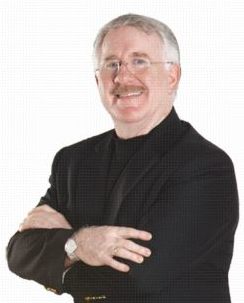Since 1993, control of the three major elements of your customer relationships—product, information, and buying decision—has been shifting from business to customer. As you may remember, I’ve identified this shift as a marketplace transition from the original age to the new one—the 10,000 year-old Age of the Seller is being replaced by what I call The Age of the Customer®.
As this shift plays out, two types of businesses—Hidebound Sellers and Visionary Sellers—currently exist in parallel universes, but not for long. Which one are you?
Hidebound Sellers
These companies are so invested and entrenched in the old order of control that they deny the reality in front of them. They can be identified by the following markers:
 • Misplaced frustration: As performance goals get harder to accomplish, frustration makes those who deny the new realities think their pain is caused by a failure to execute.
• Misplaced frustration: As performance goals get harder to accomplish, frustration makes those who deny the new realities think their pain is caused by a failure to execute.
• Bad strategies: It is said that armies prepare for the next war by training for the last one. So it is with Hidebound Sellers. Not only do Age of the Customer influences make them think they’re being attacked, but they persist in using Age of the Seller countermeasures.
• Destructive pressure: Convinced of execution failure, pressure brought to bear by management results in an employee casualty list instead of a growing customer list.
• Equity erosion: Defiance in the face of overwhelming evidence sustains the deniers only until they run out of Customers with old expectations, and their equity and access to credit are depleted.
Visionary Sellers
These businesses are adjusting their plans to conform to the new reality of more control by customers. Visionary Sellers are identified by these markers:

• Acceptance: They accept that the customer is now in control and make relevance adjustments to this reality.
Modern sales force: They hire and train their sales force to serve increasingly informed and empowered customers.
• Technology adoption: They offer technology options that allow customers to find, connect, and do business using their preferences.
• Relevance over competitiveness: They recognize that while being competitive is still important, today it’s just table stakes, and is being replaced in customer priority by the new coin of the realm: relevance.
In The Age of the Customer, Hidebound Sellers are dinosaurs waiting for extinction. Visionary Sellers are finding success by orienting operations and strategies around a more informed and empowered customer.
So what’s the verdict? Are you Hidebound or Visionary?



















